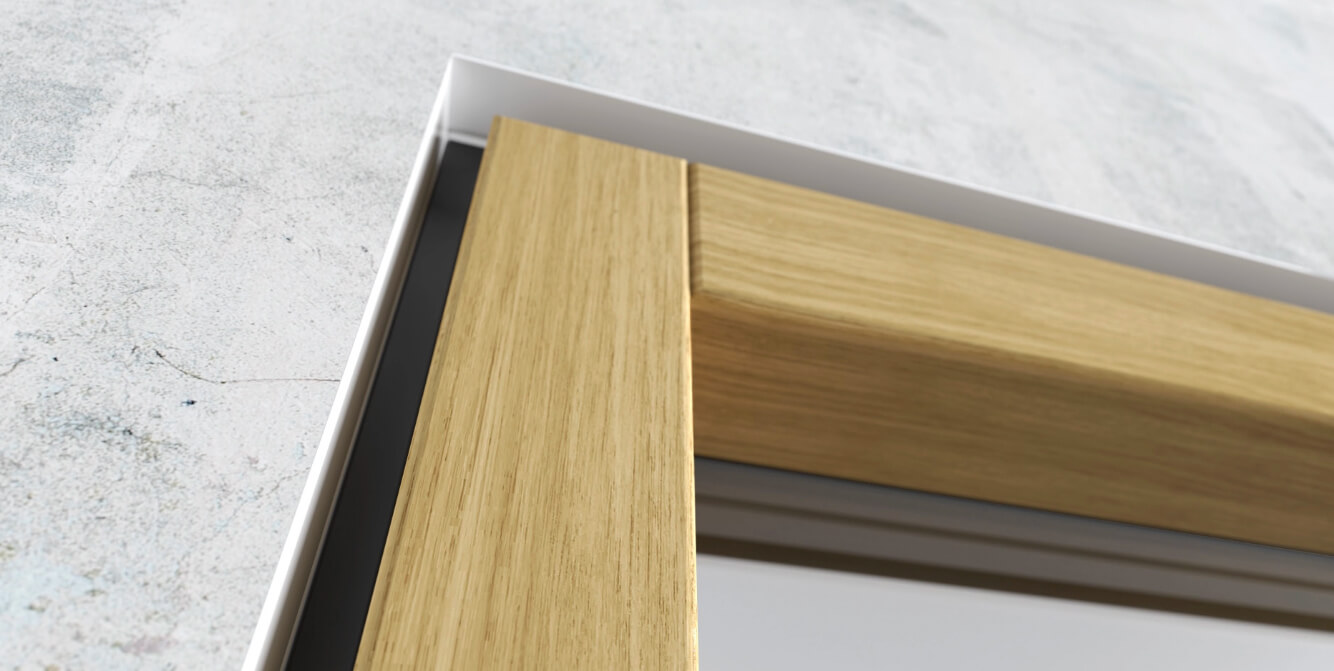Why is the window frame so important in a positive house?
The 2 fundamentals of window frames in a positive house.
May you don’t know us yet, let’s have a quick introduction: we are ERA architects.
Actually, I am Esther Rovira, architect and passive house designer in Barcelona, Catalonia and Andorra for either passive houses, efficient houses and positive houses.
In this post ‘ Why is the window frame so important in a positive house?’, You will find our professional recommendation.
I hope it helps, let’s go!
The window frames of a positive house have to achieve two things: airtightness, insulation and avoid thermal bridges.
The first depends on different agents. The other two are strictly tied to the frame material.
Let’s see how to achieve both:
1) How to achieve the tightness of the frames
The tightness of the frames depends on their correct detailed architectural design and their installation.
Therefore, in the first place it is the obligation of the architect.
The architect designs the construction detail by placing the frame on the floor plan and specifying where the continuous line of airtightness goes (called a red pencil check).
Next, specify what material will be used to achieve air tightness from the outside and from the inside.
Especially in the connections, such as frames-walls, and also frames-floor and, if necessary, frames-ceiling.
This is usually achieved with special products that expand with changes in temperature.
They come in different formats, basically on tape or expandable foams. (Note that the foams will likely be polymer based.)
A quick anecdote:
In most low-quality construction, the main cause of the loss of comfort is the low-quality windows installed. I have an architect friend who always tells me how he remembers studying as a child in front of his window table with a lot of papers on it. She can perfectly capture the image of her papers being slightly moved by the draft coming through the window on a windy day, so she had to place her pencil case on top of the papers to get some concentration. I bet she had to wear a scarf too!
2) How to get insulating frames and avoid thermal bridges
The frames come in different materials.
As you may already know, different materials cause them to behave differently with outdoor temperatures.
Which also means that, depending on the materials of the structure, you will end up with a naturally insulating material or a thermal bridge with the winter cold outside (see our post What is a thermal bridge? for more detailed information).
Let’s then review the different materials on the market for passive houses to see how they behave.
(Note that this is a list of market offerings. Most are not made from natural materials. If you only want natural materials, then you will recognize wood on this list.)
Aluminum
Although there is a wide variety of aluminum windows with thermal break certified by the Passive House Institute; personally this option does not convince me (for now).
Aluminum is a material with high thermal transmittance (this means that it transmits a lot of the temperature from the outside to the inside and vice versa).
For aluminum joinery to meet the insulation levels required by a passive house, these joinery have multiple insulating chambers with added insulating foams.
This increases the dimensions of the joinery to a minimum of 110-119 mm.
Fiberglass
This material has very little use.
The reason it is on this list is because there are manufacturers who have certified frames made of this material.
So this material is thermally better than aluminum, but it’s not even close to the thermal performance of PVC. This material is almost 10 times stronger than PVC and much more stable (with less expansion and contraction with changes in temperature).
They tend to be wide (105mm bot lane) and have very high durability.
There are only 8 manufacturers of this type of joinery in the world and 6 are in China.
(Note: I have never heard of anyone using this material for frames in Spain.)
PVC
At the moment, the material with the best thermal performance and value for money are PVC windows.
In other words, it is your most economical and thermally insulating option.
Still, you should know that they are a bit ugly, with massive frames that do not allow for large openings (101mm on the bottom rail).
It is also important to note that PVC is Polyvinyl Chloride and that, like all polymers, its base is petroleum (usually more than 40%!).
Wood
It is the most consistent option because wood is naturally insulating.
Despite the fact that they tend to be thicker (117-121mm on the lower door), today you can find models with minimal carpentry (98mm on the lower door).
The only two drawbacks are: its price and its maintenance.
You can avoid maintenance with mixed wood carpentry with a piece of aluminum on the outside. Of course they are the most expensive of all.
(Note: In the Eixample district of the city of Barcelona, you are forced to use wood in your frames. Sometimes even to use a certain type of color. This is to protect the urban landscape of that centennial neighborhood).
Our professional recommendation:
Ask your architect to provide you with the U value of the window frames.
So you can know if he knows how to design a positive house or not.
You may also be interested in:
https://era.archi/why-are-windows-important-in-a-positive-house/
Hope this post ‘ Why is the window frame so important in a positive house?’ is helpful!
Best of luck on this adventure.
See you on the next post,

P.S. Wanna get FREE tips for your project weekly? Yas! or follow us on Instagram, Pinterest, Twitter y Facebook




Leave A Comment